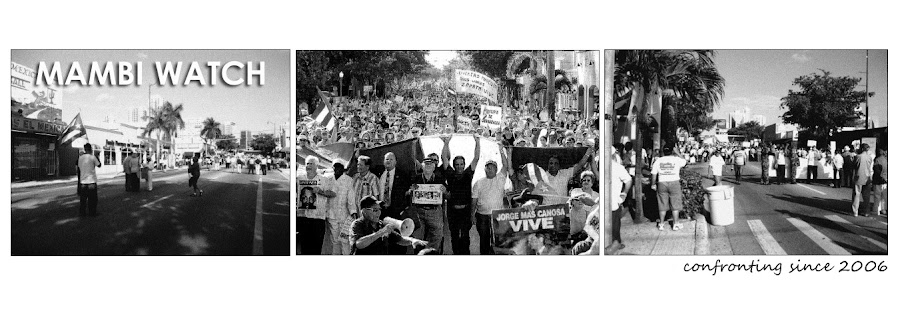 "That's when the shit hit the fan," writes Vivien Lesnik Weisman on her blog. "Bombings, death threats and drive by shootings would typically scare the shit out of somebody and make them shut the fuck up, but not my dad."
"That's when the shit hit the fan," writes Vivien Lesnik Weisman on her blog. "Bombings, death threats and drive by shootings would typically scare the shit out of somebody and make them shut the fuck up, but not my dad."Yesterday, the Miami Herald's movie critic, Rene Rodriguez, had an article published about a new documentary titled The Man of Two Havanas. Rodriguez interviews the writer and director, Vivien Lesnik Wiesman, and writes about the focus of the film: Max Lesnik.
The Man of Two Havanas is a personal exploration for the director as much as it is a documentary on Max Lesnik. Rodriguez describes it as "about a woman who, in the process of getting to know her father better, ends up discovering a passion inside her she did not know existed."
Lesnik Weisman's blog, at the Huffington Post, writes that "Terrorism in America did not begin on September 11th. In the 1970s and 1980s, there was a reign of terror in Miami. There were as many as seven bombings in one day and hundreds per year. The culprits were not Communists. They were Americans. And my family was at the epicenter." One of the targets was Max Lesnik.
Max Lesnik in the eighties had adopted a political viewpoint that was found intolerable by some in the Cuban exile community. He was opposed to US policy towards Cuba. He published a political magazine called Replica, whose main office was repeatedly bombed and threatened.
Lesnik Weisman's film premiered last month in New York to a standing ovation.
The hard-line on Cuba policy, and its intolerance for an alternative, is difficult to understand, especially in the United States of America. I first noticed this phenomenon during the Elian case in 2000, but have noticed that the hard-line stance goes way back.
Jim Mullin, from the Miami New Times in 2000, wrote that "[l]awless violence and intimidation have been hallmarks of el exilio for more than 30 years." Mullin added a long timeline of violent episodes in Miami related to Cuban issues. Many incidents include Max Lesnik's office for Replica magazine.
Below I include excerpts from Joan Didion's 1987 book Miami, where she describes another violent episode from 1986. Reading about this event gave me some insight to the history of the hard-line position in Miami. It also provides greater context and an explanation to what occurred on January 19th of this year: The Attack on the Bolivarian Youth.
[Photo above of Max Lesnik with Fidel Castro]

No comments:
Post a Comment